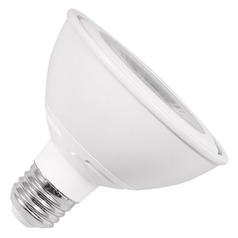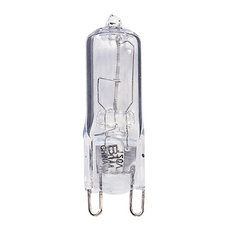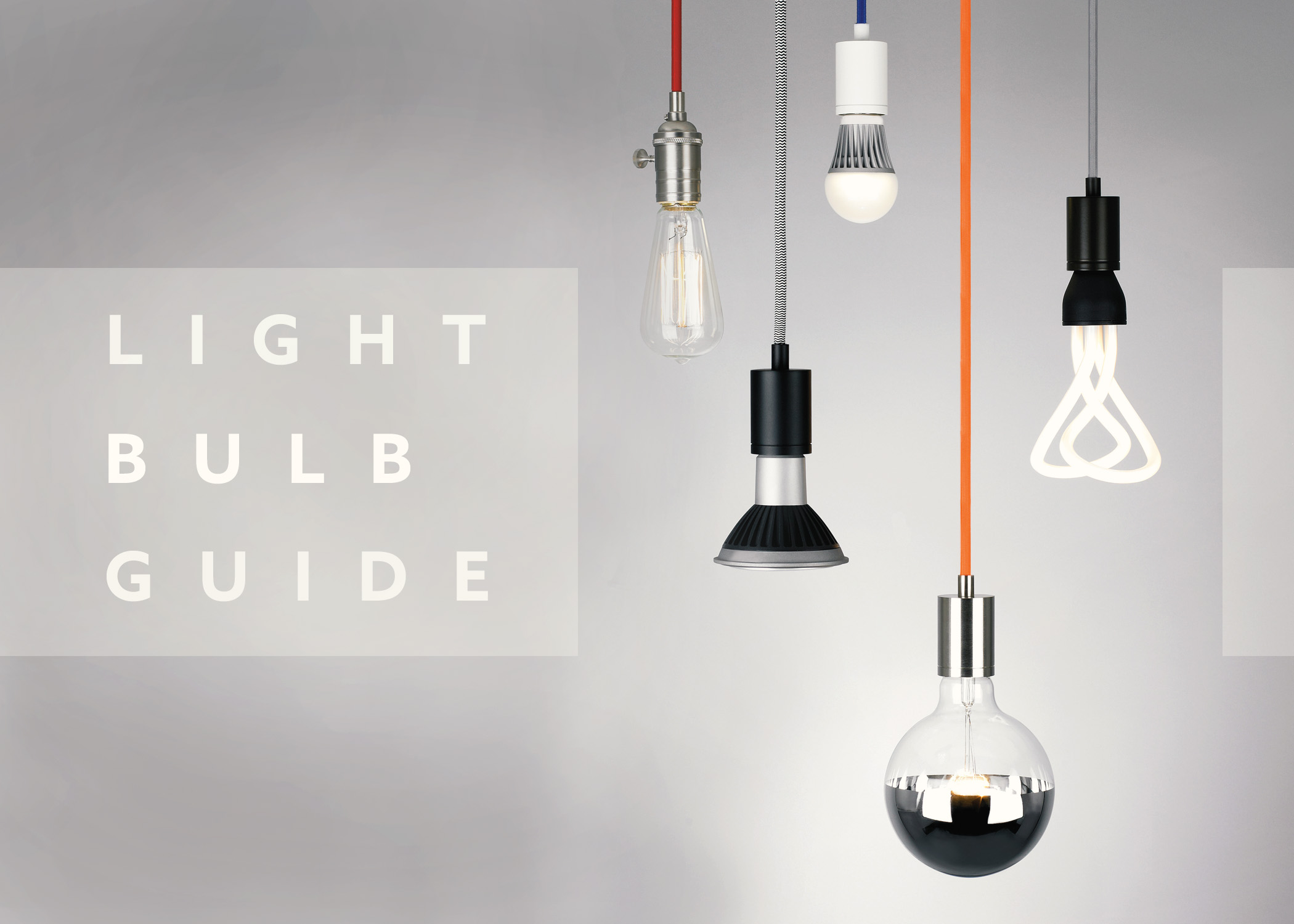Choosing the right types of light bulbs for your home is no longer as simple as grabbing the first one you see that matches the wattage. With all of the different options available, you need to understand the differences in wattage, light color, fixtures and safety to ensure you’re using the right bulbs for your needs.
Understanding Your Light Bulb Options
LED | Light Emitting Diode

If you’re looking for a bulb that is long-lasting, uses considerably less energy and doesn’t heat up during use, LED options are just what you need. LED bulbs produce light ranging from the warm yellow glow reminiscent of incandescent bulbs to the bright bluish color of natural daylight, ensuring an option that works in almost any space.
- Cost – Compared to other lighting options, LED bulbs cost more. The tradeoff is that a 10-watt LED produces the same light brightness as a 60-watt incandescent or a 14-watt CFL, and that means you’ll save on energy costs as soon as you switch to them.
- Lifespan – Lasting an average of 25,000 hours, and with some going as long as 50,000, the lifespan of LED bulbs gives them a definite edge over other types of lighting.
- Directional – LEDs provide directional lighting, which means the illumination hits a single spot rather than spreading out over a larger area. This is ideal for task and accent lighting. New bulb technologies contain diffusers, which help spread the light and make these bulbs better for ambient lighting as well.
- Durability – LED bulbs don’t have fragile filaments like incandescent and halogen styles and they stand up to slight bumps and drops. If the bulbs do break, they are also less likely to shatter.
Incandescent
Incandescent light bulbs are the typical bulbs you’re used to purchasing for your lamps and fixtures. These bulbs, though inexpensive, use more energy and emit high amounts of heat that can affect the temperature in your home. Due to their reduced efficiency, many incandescent bulbs are being phased out and replaced with options that are more environmentally friendly.
CFL | Compact Fluorescent
Compact fluorescent (CFL) bulbs are similar to the large tubes you see lighting up stores and businesses, but in a design that fits in most fixtures. These options provide warm and cool light depending on the ones you choose, but do take a bit of time to warm up after you flip the switch. CFL bulbs also have additional considerations when deciding if they’re the right ones for the lighting you want.
- Energy Usage – CFL bulbs use around 75% less energy than incandescent bulbs.
- Cost – Compact fluorescent lights cost between $2.00 and $20.00, making them much more expensive than previous lighting options. However, the reduced energy usage offsets the cost by helping to decrease energy bills.
- Durability – CFL bulbs can handle a bit more jarring and bumping than incandescent bulbs, but they can still break easily.
- Mercury Content – These bulbs contain up to 5 milligrams of mercury depending on the size. You’ll have to make sure each bulb is disposed of properly, but you won’t need to panic if you happen to drop one and it breaks. Just air out the room and carefully clean up the broken glass, making sure to put it in a sealed bag or container. Whether you have burned out or broken CFLs, you’ll want to take them to a recycling center for safe, proper disposal so there aren’t any adverse effects on the environment.
- Lifespan – CFL bulbs last between seven and 10 times longer than incandescent bulbs under ideal conditions. However, using them in areas where they are turned on and off frequently or where they are exposed to cold temperatures will lessen the lifespan.
Fluorescent
Fluorescent bulbs are most found often in the form of tubes, but are also available in circular and U-shaped options. These bulbs contain mercury vapor that interacts with electricity to produce UV light. The insides of the bulbs also have a coating that causes the UV rays to instantly become visible light. Fluorescent bulbs don’t come with traditional sockets and require ballasts, which control the electrical current to the lamp.
Types
- Fluorescent bulbs come in a variety of types, with the most common being T12, T8 and T5. T12 lamps were once a popular option for lighting buildings and other facilities, but they have a shorter lifespan and are less efficient than more recent models. T8 fluorescent bulbs are smaller, offer up to 30,000 hours of life, save energy and help colors appear brighter and truer than the T12 lamps.
- T5 lamps are the most recent addition to the fluorescent family. They offer the same benefits as the T8 options, but are designed for use in metric fixtures. These bulbs are available in High Output options, which offer the double the light output and lessen the bulb requirements in larger spaces.
Halogen
Halogen bulbs rely on a filament that heats up to produce light. They are similar to incandescent bulbs, but are more energy efficient. These bulbs don’t contain mercury, but do have halogen gas inside that recycles back onto the filament to increase efficiency.
Halogens produce warm light and last for around 2,000 hours on average. These bulbs are ideal for lighting scenarios that would normally require incandescent bulbs, making them a good choice for those who aren’t quite ready to choose between LED and CFL bulbs.
Xenon
Xenon bulbs also contain gases and a filament that work together to produce light. The filament heats up from the electricity until it glows. The xenon gases help to recycle the tungsten gas that produces light in incandescent bulbs, while also increasing the life of the filament for a longer lasting bulb. Xenon options have an average lifespan of 10,000 hours and require less energy than halogens bulbs that produce the same light brightness.
Choosing the Right Light Bulb
Understanding the most popular types of light bulbs available is only the start of choosing the right options for your home or office. Lumens, wattage, energy efficiency and color temperature all play a role in creating layered lighting effects that meet the needs of most users.
Lumens vs. Wattage: What’s Really Important
Instead of focusing on the wattage of a particular bulb, you’ll want to consider the lumens to determine just how much light it will produce. Lumens is how much light the bulb emits, while the wattage describes how much energy it uses to do so. While wattage was important with incandescent bulbs, the bulbs today offer more brightness while using less wattage to do so. If you’re replacing incandescent lights, you’ll want to consider the following:
- 40 watts is around 450 lumens
- 60 watts is similar to 800 lumens
- 75 watts is close to 1,100 lumens
- 100 watts is about 1,600 lumens
Color Temperature
Look at the label on any bulb and you’ll see color temperature ratings. These ratings, which are measured in degrees of Kelvin, tell you what color of light the bulb provides. Bulbs with a lower Kelvin rating emit a warmer, yellow light. Those at the higher end of the scale produce a cool, bluish-white light.
The warmth and coolness of light effects the way in which a room appears. Soft, warm light offers a yellowish cast that is ideal for ambient lighting. Cool, white light is closer to daylight and provides bright color throughout the space.
Color Rendering Index (CRI)
The Color Rendering Index (CRI) explains how well colors within a space will react with the light bulb. CRI uses a scale between one and 100, with the lower numbers providing less color accuracy. Bulbs with a CRI of 80 or above produce truer colors, making them ideal for use inside where they highlight the color schemes you choose.
Average Rated Life
Each bulb has an Average Rated Life that describes how long you can expect it to last. The rating is determined by how long it takes half of a given batch of bulbs to fail, but it doesn’t describe the actual lifespan you can expect. Some bulbs may last longer, while others used in cold or other unusual conditions may have a shorter life.
What to Consider When Choosing Bulbs
The fixtures you have, where they are located and the look you want to achieve are all important considerations when choosing different types of light bulbs. If you’re lighting outdoor areas, look for bulbs like those for wet locations to ensure a longer life in harsh conditions. For indoor lighting, you’ll want to consider what type of lighting effect you want to achieve.
Fixtures
The difference in bulb sizes plays a role in choosing the right option for your fixtures. You’ll want to consider the base size and type and how much space is available in lamps that have covers or shades. Make sure to check the recommended wattage in each fixture to make sure you choose bulbs that won’t present a fire hazard.
Lighting Type
Optimal lighting is created in layers of ambient, task and accent styles. Bright, cool bulbs work well for task lighting and highlighting architectural aspects, artwork and other parts of the decor with track lights and similar options. Warm, yellow light adds ambiance and ensures plenty of illumination throughout the room when used in table lamps and chandeliers.
Once you understand which light bulbs will work best for your needs, you’ll be able to create unique lighting styles throughout your home. Consider the color temperature, lumens, wattage and lifespan to choose the right bulbs to add light to any space and lower your energy bills during the year.

